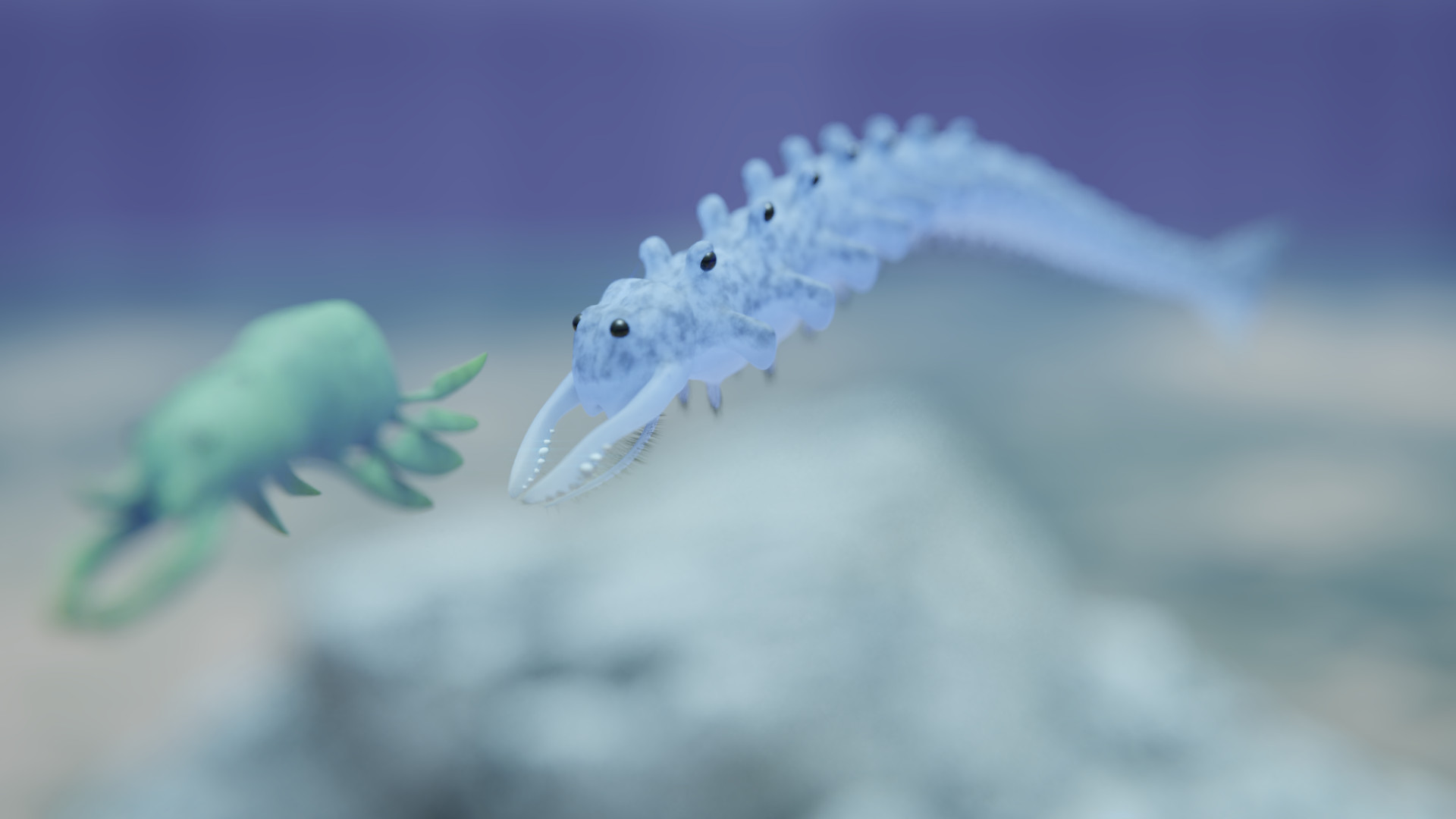Cage-Gill Worm
Basic Information
Anatomy
Like their ancestors the Cage-Gill Worms have segmented bodies with several pairs of eyes. Though there are notable differences in their anatomy as well. Cage-Gill worms eyes only go as far back as the 8th segment and are situated on tall stalks that support the eyes. The pair in the front are far more advanced, being able to detect movement and some depth while the other 7 pairs are only functional in comparing differences in light and dark. Other differences are the first pair of fins and the fist gill set have been modified into a ‘cage’ like structure used in feeding. The tail has developed a fluke used to help in propulsion and greater movement.
Genetics and Reproduction
Cage-Gill Worms spend most of their lives as a solitary hunter, using their adapted front gills and fins as a way of trapping or capturing prey before using rounded teeth in the interior of their mouth to grind and crush them up. But during the later half of a local year Cage-Gill Worms will meet near shallow deltas and broadcast spawn releasing thousands of eggs and sperm into the water before returning to deeper waters for hunting.
Growth Rate & Stages
Juveniles start as what’s referred to as ‘Gilets’ who spend the first year of their life near sediment fishing out small particles and microbial life to eat. Gilets are around 0.4 cm in length and height, after 1 year the juvenile will increase to becoming their fully mature size within 3/4ths of one local year.
Additional Information
Geographic Origin and Distribution
Cage-gill worms are pelagic creatures who will dive into the twilight zone, but spend most of their time in the photic zone. They however spend most of their time just away from continental shelves, swimming toward land to breed.
EXTINCT
Genetic Ancestor(s)
Scientific Name
Decipuladentemeos kirbyi
Origin/Ancestry
Xenosegmenta
Lifespan
7 local years
Average Height
2 cm
Average Length
20 cm
Body Tint, Colouring and Marking
Light grey with a patchy pattern of darker blues on the dorsal
Remove these ads. Join the Worldbuilders Guild











Comments